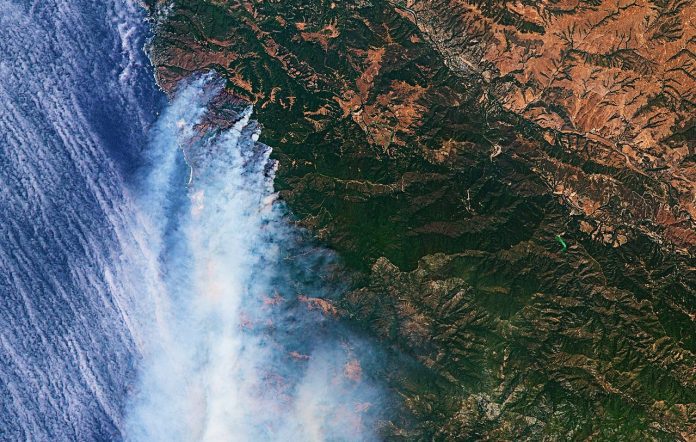Pacific Gas and Electric Company (PG&E) is testing artificial intelligence (AI) and machine learning (ML) on a widening network of high-definition (HD) cameras in order to detect wildfires across 70,000 square miles of northern and central California. It claims to have “eyes in the sky”, to differentiate wildfire smoke from fog and other false indicators, across most of its service areas.
PG&E has installed 138 new HD cameras in 2021, taking the total number in its coverage reach to 487; of these, 46 are being tested with new machine vision software, across areas at higher risk of wildfires. Data from the cameras is being used by PG&E’s wildfire safety operations center (WSOC), as well as local fire agencies. It is working with the ALERTWildfire initiative, a cooperation between a number of US universities and labs, and AI outfit Alchera Technologies.
PG&E worked a similar pilot with wildfire detection firm Pano AI, alongside Portland General Electric, through the Electric Power Research Institute’s 2021 ‘Incubatenergy Labs Challenge’, again demonstrating usage of ultra-HD imagery and AI to detect fires and enhance situational awareness. The new pilot is already showing results, said PG&E; in August, a camera in the Howell Mountain viticultural area in Placer County in the Napa Valley spotted smoke a minute before the fire dispatch, and several minutes sooner than the manual movement of the camera.
A statement explained: “That smoke ended up becoming the River Fire. This is one example of many noted during both pilots confirming the value of early fire detection technology.” The pilot cameras provide 360-degree views with pan, tilt and zoom capabilities and can be viewed by anyone through the ALERTWildfire Network. By the end of 2022, PG&E wants to have around 600 HD cameras running machine-vision AI, covering 90 percent of the high fire-risk areas it serves.
Sumeet Singh, chief risk officer at PG&E, said: “Even with the two significant rainstorms in October and November, we are still in a historic drought and California, along with other western states, continue to experience an increase in wildfire risk and a longer wildfire season. We are using every new tool and technology at our disposal to improve situational awareness and intelligence to help mitigate and prevent wildfires, including this new AI capability. Every bit of data and intelligence that comes to us could potentially save a life.”
Eric Sutphin, Supervisor at the PG&E WSOC, said: “The software analyzes the video feed and if it thinks it sees smoke, we receive an alert via email and text, telling us it just detected smoke. Our analysts then pinpoint where the smoke is coming from and determine if it’s a car fire, dumpster fire, or even a vegetation fire. Based on the location, we can assess for threat to the public or PG&E facilities. The AI filters out a significant number of false positives, for example, ruling out dust, fog or haze.”
He added: “We know the cameras are doing well at spotting wisps of smoke from long distances. We plan to assess our initial implementation, continue to gather the data, and develop a plan for using this leading-edge technology on a more expanded basis.”

